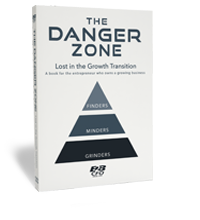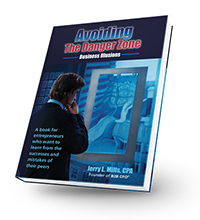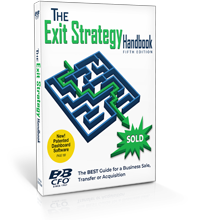Protecting intellectual property rights can safeguard your company from copycats.
by ELAINE POFELDT – January 2010
Aspirin. Cellophane. Thermos. These were once trademarked names. But because the owners of the trademarks were not careful to control their proper use, they became part of the public domain. Competing companies were then able to use them in marketing materials, reaping the rewards of the work the original owners put into creating them. The lesson?
When you have an idea— whether it’s a great brand name or a hot new product—the first thing you should do is consider protecting it.
Before you start, you should understand the ways you can safeguard your idea and realize that it will cost money, time and effort. “Protecting intellectual property is not a one-time event,” says Alexander Poltorak, founder and CEO of General Patent Corp., a management firm in Suffern, NY, and author of Essentials of Licensing Intellectual Property. “It’s part of an overall business strategy.”
There’s no one-size-fits-all rule as to which types of businesses need to be aggressive about IP
protection, but experts recommend considering your IP value before making a decision. If, say, you’ve
invested millions of dollars and several years of work in developing a new technology, you’ll want to be
very zealous.
Your first step should be figuring out what protection you need. There are four large groups of IP rights:
trademarks, patents, trade secrets and copyrights. According to Paul Craane, a partner with the
intellectual property law firm Marshall, Gerstein & Borun in Chicago, “Sometimes, people confuse what
each of these rights covers. You’ll hear people say ‘I’ll trademark my idea.’ You can patent an idea, but
you can’t trademark it.”
Rather, a trademark protects your brand, including names (like Band-Aid and Xerox), slogans, icons or
even colors you use to identify your business. Typically, it costs about $1,000 to register a trademark
with a lawyer’s help, and another $2,000 if you request a formal search to make sure no one has already
used the name, says attorney Stephen Driscoll, a partner at Saul Ewing in Philadelphia. In a worst-case
scenario, another company could sue you for using its trademark, or you could be forced to change the
name and replace signs and advertising materials.
According to attorney Mark D. Rasch, principal of Secure IT Experts, an information security consultancy,
the best way to protect your trademark is by getting your name out there. “The more people who
identify that trademark with you, the more protected you are in terms of the trademark,” he says. For
the most part, the law gives famous trademarks greater protection than unknown ones, on the premise
that these are the ones most closely identified with a particular company. However, if a trademark
becomes so well known that people start to use it as a generic term (yo-yo and escalator, to name a
few), it may be hard to defend without a massive legal effort.
Unlike trademarks, patents safeguard inventions, ideas or the method used to make something. To get a
US patent, which lasts 20 years, one must describe the product or method in detailed documents for the
US Patent and Trademark Office (USPTO) within one year of releasing it on the market. If someone
copies the idea, you can sue for patent infringement. Getting a patent isn’t cheap —it will cost at least
$10,000 to cover an attorney and legal fees, sometimes more. But don’t try to save money by applying
for the patent on your own. If you don’t fill out the paperwork correctly, a court may find a patent to be
invalid. “We’ve dealt with some investors who had breakthrough technologies,” Poltorak says. “Their
inventions were worth millions, but their patents were completely unenforceable.”
To buy some time, some small companies file for “provisional” applications with the USPTO using a
more streamlined, lower-cost process that isn’t subject to the same detailed review. These typically cost
about $100 and give the inventors up to one more year to file a full-scale patent application. Steven
Panzella, the Little Neck, NY-based inventor of Mini Chill, a drink that claims to help people relax, took
this route last year, before doing his first manufacturing run. “I’m glad I stumbled upon this,” he says.
“How do I know the drink is going to succeed?” Another option is to treat your idea as a trade secret, or
information your company hides from competitors. You’ll have legal protection without having to reveal
your methods, and you don’t need to register it or pay any fees. For example, Coca-Cola’s secret formula
has remained a trade secret since the 19th century, long after the patent would have expired. “It’s now
one of the most valuable trade secrets in the world,” Poltorak says. And according to Rasch, unlike with
a patent, your protection lasts forever—as long as you take reasonable steps to protect it from leaking
out. One way is to require employees to sign nondisclosure agreements so they don’t share information
with your rivals if they leave the company. If you are lax about policies like these, you may find it difficult
to sue a copycat in court.
The final type of IP is copyrighting, which protects creative work such as writing, artwork and music,
giving the owner exclusive rights to reproduce and distribute it. This type of work—including material on
your website, training manuals or outside advertising—is protected automatically; you don’t have to
register the material with the US Copyright Office. But David Wolfsohn, an intellectual property attorney
and partner at Woodcock Washburn in Philadelphia, recommends registering annually, since it doesn’t
require a lawyer’s help and usually costs a couple of hundred dollars. If you do so before someone
copies your work, you’ll be able to receive both damages (a figure that is based on the value of the IP
that was violated and determined in court) and attorney fees in a court case. Otherwise, if you opt for the automatic protection the law gives you, you’re limited to going after damages and the violator’s
profits from the infringement.
Jerry Mills, founder and CEO of B2B CFO, a Phoenix firm that offers outsourced CFO services to small
companies, discovered 44 incidents of plagiarism from his website by using free software called
Copyscape. “It’s shocking that so many people steal from us,” Mills says. He worries that his competitors
will profit from the approximately $150,000 he spends annually to ensure his web copy appears high in
online searches. With the help of his attorney, he has been sending cease and desist letters giving
offenders 72 hours to remove the material before he sues them for violating his copyrights.
Fortunately, some of the most effective—and cheapest—ways to protect your IP can be done within the
company. But don’t assume that your employees (including outside consultants and temps) know what
information you want them to keep secret. “A great practice is to stamp information as confidential,”
says Marc Morgenstern, founder and managing partner of Blue Mesa Partners, a private investment
firm. As with trade secrets, have employees sign confidentiality and nondisclosure agreements, which
typically apply to all forms of IP.
Work-for-hire contracts should state that your company has ownership and IP rights to anything
consultants and free-lancers work on. And if your company develops new products or processes, ask
employees to create written records, such as manuals, databases and disclosures of new inventions, so
you’ll have the information you need to protect these ideas. “If only one person knows what he or she
knows, that information is no longer there when that person leaves,” Poltorak says.
The most important thing for small business owners to consider is how much their IP is worth to them,
because protecting it in court is more costly than many expect. If you don’t have the finances to protect
your IP, the time and expense it takes to register may not be worth it. Take it from Kirsten Osolind, CEO
of the Chicago marketing firm re:invention, who trademarked the name of her six-year-old outfit so no
one else could use it. But when another company tried to, she spent $15,000 for the first three months
of legal help, and then decided not to pursue the matter when she learned it would cost another
$100,000 to bring the case to court.
But if you do have the means, protecting your property is definitely something to consider—and the
creators of aspirin, cellophane and the thermos would agree.
GO: AirTran Inflight Magazine
http://www.airtranmagazine.com/features/2010/01/marking-your-territory




